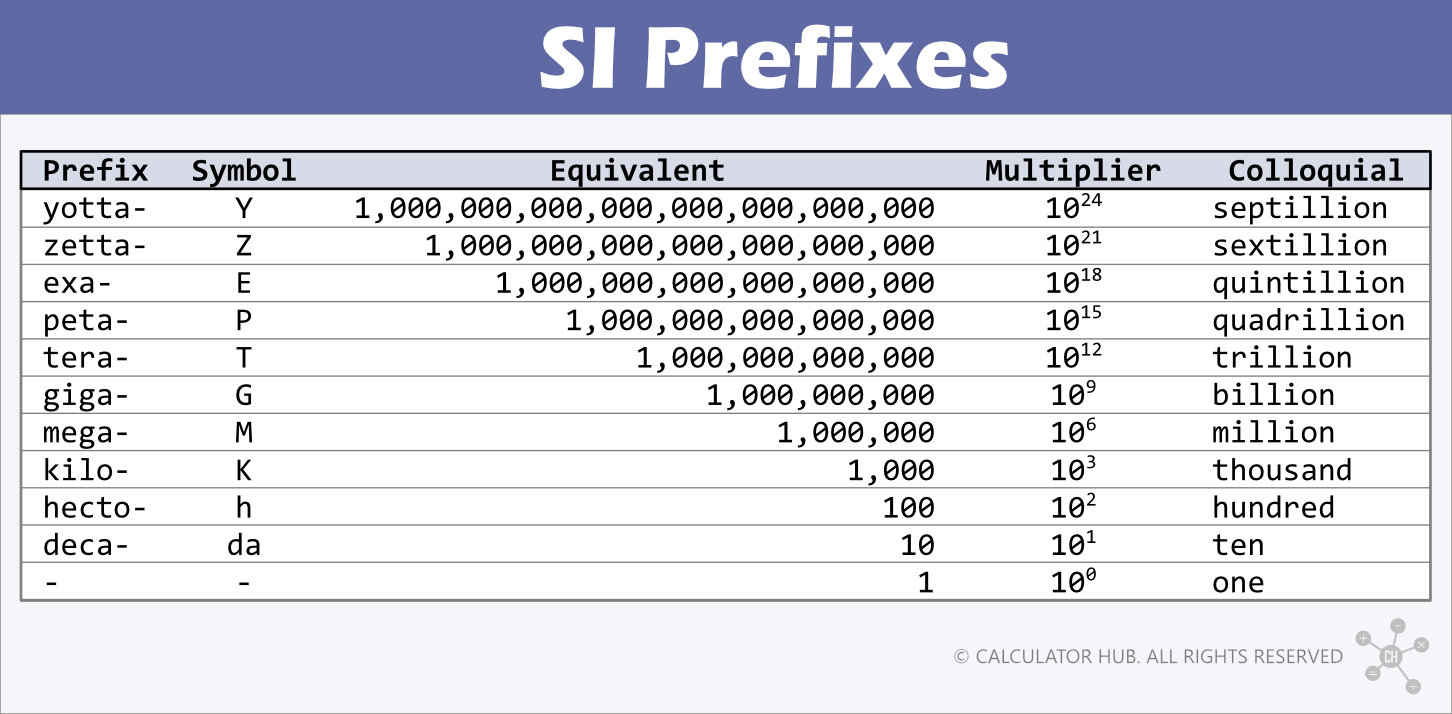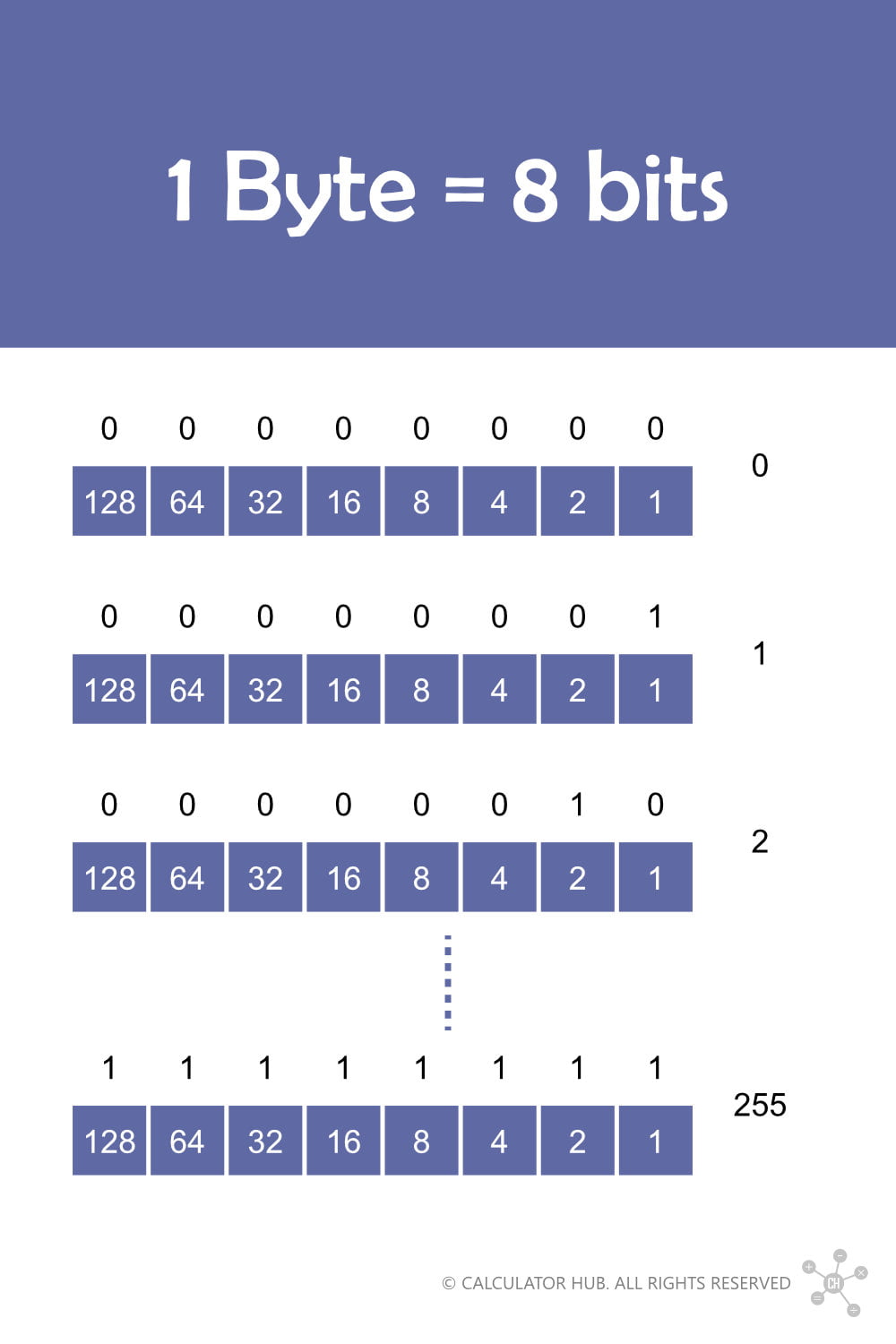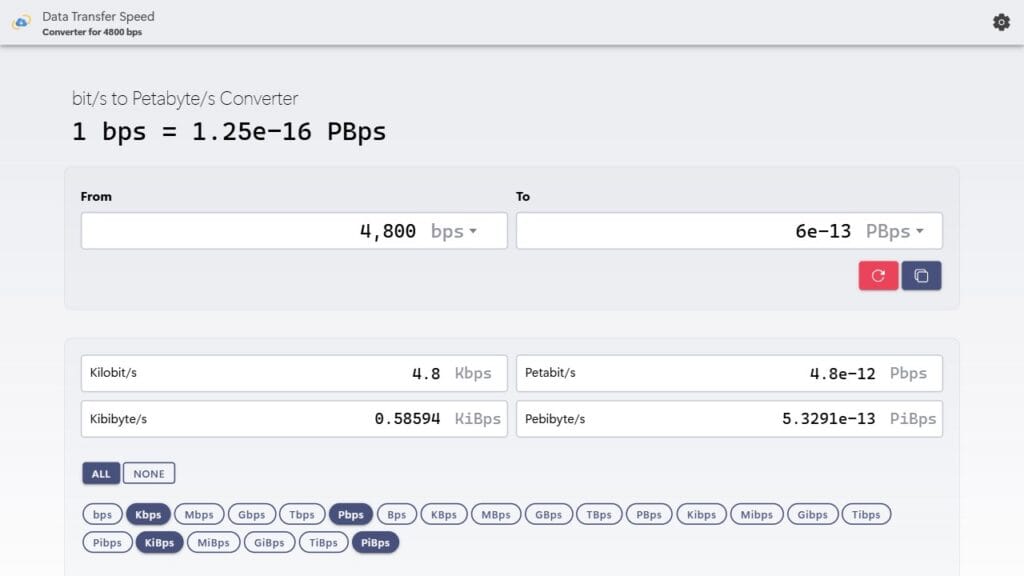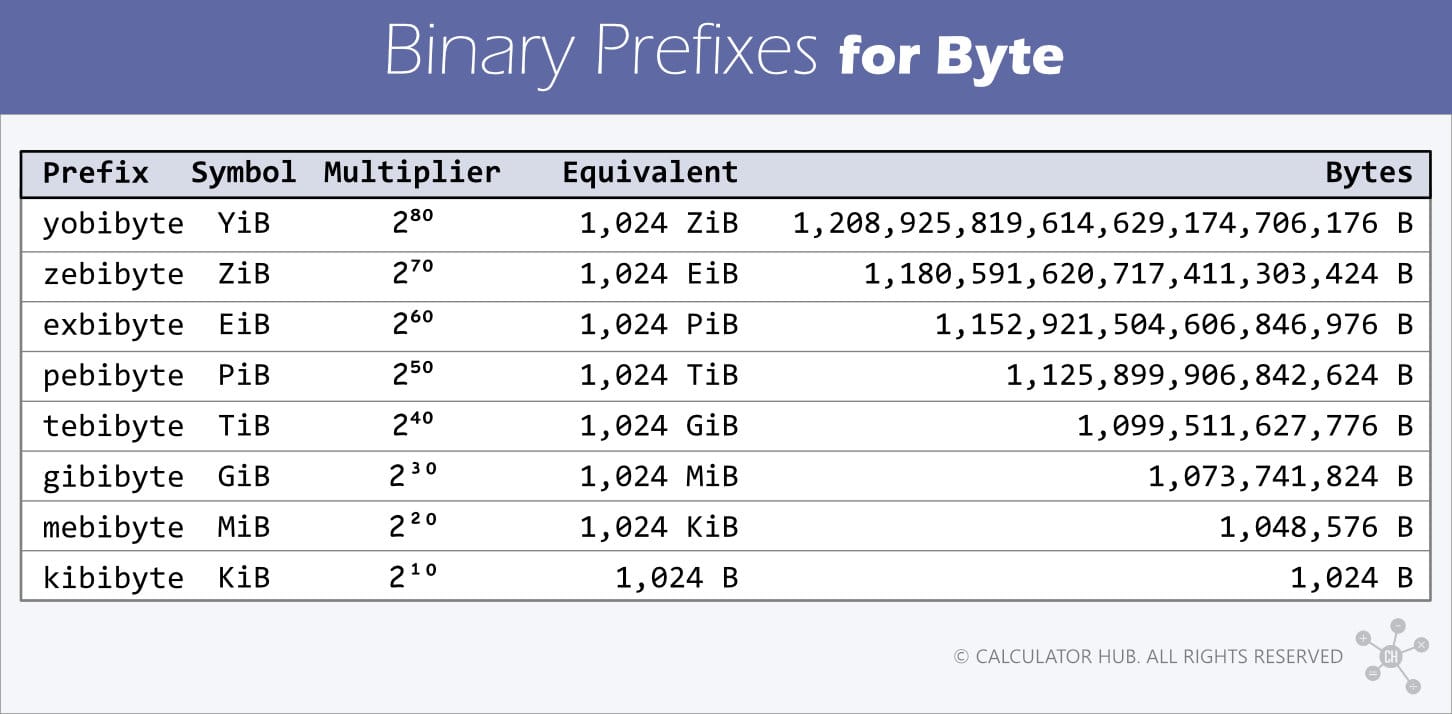In this article, we’ll show you how to convert data transfer rates from bits per second (bps) to petabytes per second (PB/s). We will cover essential definitions, provide examples, share relevant formulas, and present tables, along with answers to common questions.
Definitions of bps and PB/s
Let’s get started by understanding the key definitions and differences between bps and PB/s. Understanding these terms will allow you to perform conversions confidently.
Data transfer rates utilize International System of Units (SI) prefixes to simplify measuring and comparing. This standardization helps in conversions and understanding data transfer.
The table below shows all the SI prefixes and the associated symbols, multipliers, and colloquials.

What is bits per second (bps)?
A bit per second (bps) is the smallest unit to measure data transfer rates[1]. It can only represent two possible values: 0 or 1. It has symbols or abbreviations such as bps, bd/s, or bit/s.
Since a byte equals eight bits (1B = 8b), a bit equals 1/8 B/s or 1/8 × 10-15 PB/s or 0.000000000000000125 PB/s or 1.25 × 10-16 PB/s.
What is Petabytes per second (PB/s)?
A Petabyte per second (PB/s) measures data transfer rates during transfers between internal drives or over a local computer network using high-speed SSDs (Solid State Drives) and petabit networks.
It has symbols or abbreviations such as PBps, PB/s, Pbyte/s, or Petabyte/s.

Since a byte equals eight bits (1B = 8b), a terabyte per second equals eight petabits per second (1 PB/s = 8 Pbps).
In the International System of Units (SI), data storage and transfer rate units uses the decimal multiples of bytes (1015), which means:
1 PB/s = 1015 = 1,000,000,000,000,000 B/s1 PB/s = 8 × 1015 = 8,000,000,000,000,000 bps
Please refer to the FAQs section to find out when 1 PB/s = 8 × 250 = 9,007,199,254,740,992 bps.
bps to PB/s formula
Let’s take a closer look at the conversion formula so you can carry out these conversions independently, whether you're using a calculator or doing it manually with pencil and paper.
Fraction formula for converting from bps to PB/s: R(PB/s) = R(bps) ÷ 8,000,000,000,000,000
Decimal formula: R(PB/s) = R(bps) × 0.000000000000000125
Scientific notion formula: R(PB/s) = R(bps) × (1.25 × 10-16)
Or remember the bps-to-PBps conversion factor: 1 bps = 0.000‵000‵000‵000‵000‵125 PB/s
Examples
Now, let's take a look at an example that illustrates the calculations required to convert from bits per second to petabytes per second (bps to PB/s).
Convert 4800 bps to PB/s
Write down 4800 bps and multiply it by the bps-to-PBps conversion factor: 0.000‵000‵000‵000‵000‵125 or 1/8,000,000,000,000,000 or 1/8 × 10-15 to get the rate value in PB/s:
So, 4,800 bits per second is equal to 0.0000000000006 petabytes per second.
Alternatively, you can use our calculator by entering 4800 into the bps box, and you instantly get the rate value in PB/s or PBps, in this case, 0.0000000000006 PBps or 6 × 10-13 PBps or 6e-13 PB/s.

bps to PB/s conversion table
The conversion table below provides a handy reference for converting data rates from bits per second (bps) to petabytes per second (PB/s). It covers a range from 0.1 bps to 1,000 bps, allowing for easy and quick conversions between these units of measurement.
| Bits per second | Petabytes per second |
|---|---|
| 0.1 bps | 0.0000000000000000125 PB/s |
| 0.5 bps | 0.0000000000000000625 PB/s |
| 1 bps | 0.000000000000000125 PB/s |
| 2 bps | 0.00000000000000025 PB/s |
| 4 bps | 0.0000000000000005 PB/s |
| 5 bps | 0.000000000000000625 PB/s |
| 10 bps | 0.00000000000000125 PB/s |
| 20 bps | 0.0000000000000025 PB/s |
| 30 bps | 0.00000000000000375 PB/s |
| 40 bps | 0.000000000000005 PB/s |
| 50 bps | 0.00000000000000625 PB/s |
| 60 bps | 0.0000000000000075 PB/s |
| 70 bps | 0.00000000000000875 PB/s |
| 80 bps | 0.00000000000001 PB/s |
| 90 bps | 0.00000000000001125 PB/s |
| 100 bps | 0.0000000000000125 PB/s |
| 200 bps | 0.000000000000025 PB/s |
| 500 bps | 0.0000000000000625 PB/s |
| 800 bps | 0.0000000000001 PB/s |
| 1000 bps | 0.000000000000125 PB/s |
FAQs
Is 1 bps or 1 PB/s faster?
A petabyte per second (PB/s) is eight quadrillion times faster than a bit per second (bps). A bit per second (bps) is the smallest unit for measuring data transfer rates. Here are the relationships between the units:
1 B/s = 8 bps1 PB/s = 1 × 1015 = 1,000,000,000,000,000 B/s1 PB/s = 8 x 1015 = 8,000,000,000,000,000 bps1 bps = 1 ÷ (8 x 1015) = 1/8 x 10-15 = 0.000000000000000125 PB/s
How to convert from bps to PB/s?
To convert a data transfer rate from bits per second (bps) to petabytes per second (PB/s), follow the simple steps below:
- Write down the rate value in
bits per second (bps). - Multiply it by the value of a
bps-to-PBpsconversion factor:0.000000000000000125or1/8,000,000,000,000,000or1/8 × 10-15. - The result from multiplication is the value of the transfer rate in
petabytes per second (PB/s).
Is 1 petabyte per second (PB/s) equal to 1,024 terabytes or 1,000 terabytes per second?
1 PB/s can be defined as either 1,000 TB/s (SI convention) or 1,024 TB/s (binary convention), depending on which standard you choose to use.
In the binary system, where used by most computer operating systems (e.g. Windows, macOS, and Linux), units are powered by two instead of 10, which means:
1 PB/s = 210 Terabytes/s = 1,024 TB/s1 PB/s = 250 bytes/s = 1,125,899,906,842,624 B/s1 PB/s = 8 × 1,125,899,906,842,624 = 9,007,199,254,740,992
To avoid this confusion, the International Electrotechnical Commission (IEC) introduced new prefixes for the binary system.
The table below lists all binary prefixes, their symbols, and multipliers for the byte unit.

So, instead of using Petabyte per second (PB/s), you can use Pebibyte per second (PiB/s or PiBps) to refer to the binary system specifically:
1 PB/s = 210 Terabytes/s = 1,024 TB/s1 PB/s = 250 bytes/s = 1,125,899,906,842,624 B/s1 PB/s = 8 × 1,125,899,906,842,624 = 9,007,199,254,740,992
You now know how to convert a data transfer rate from bits per second (bps) to petabytes per second (PB/s). You can quickly use our calculator to convert between the rate units to save time for future calculations.
For further understanding, check our data storage converter page to learn more about the differences between decimal and binary units of data storage.

